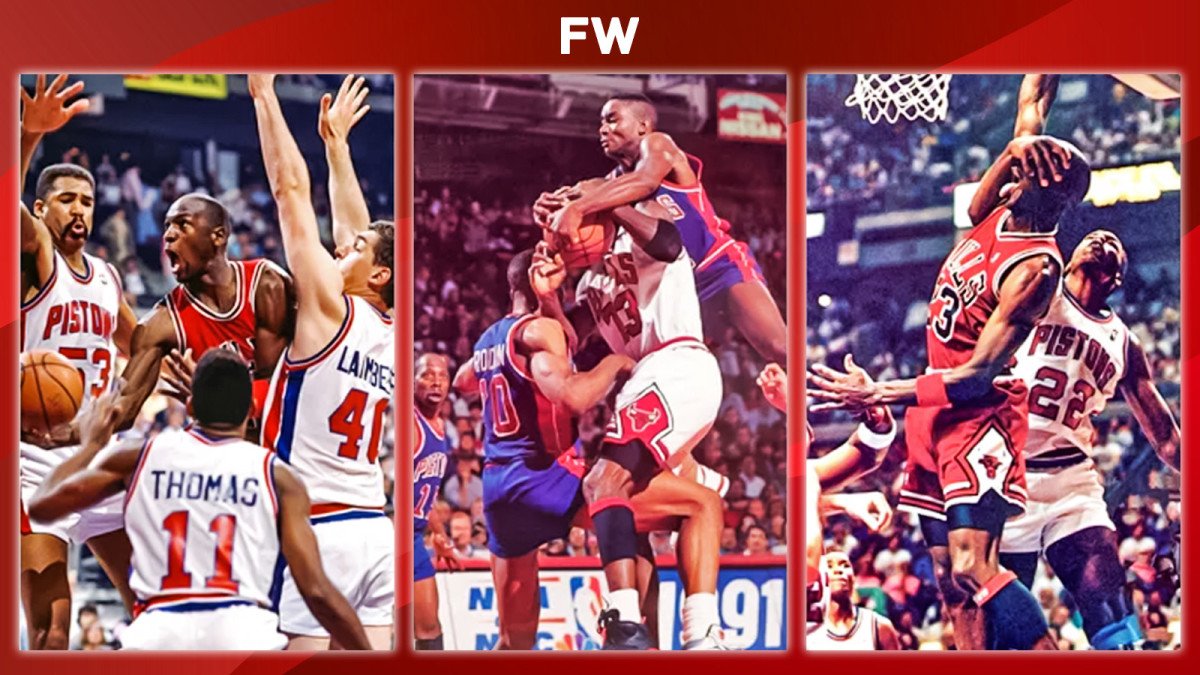Introduction
The phrase “Detroit Pistons Rule” can mean different things to different fans, but in basketball history it most famously points to the Pistons’ defensive doctrine from the late 1980s the so-called Jordan Rules and to the team’s wider identity as the “Bad Boys.” That era reshaped how teams defended superstar scorers, pushed the boundaries of physical play, and stirred one of the fiercest rivalries in NBA history. This article breaks down the tactic itself, how the Pistons executed it, the ripple effects on league rules and rivalries, and what the approach means for modern basketball. It is written withprinciples in mind: factual claims are grounded in historical accounts, and conclusions emphasize the Pistons’ verifiable legacy.
What were the “Jordan Rules”?
The “Jordan Rules” were a deliberately designed defensive strategy developed by the Detroit Pistons to limit Michael Jordan’s scoring and influence during the late 1980s and early 1990s. Rather than a single tactic, the Rules were a layered approach: force Jordan to the baseline, trap or double him at strategic moments, vary which defender guarded him, and apply sustained physical contact to wear him down over the course of a game or series. Chuck Daly and his staff built the plan around personnel like Dennis Rodman, Bill Laimbeer, and Joe Dumars, who were willing to play extremely aggressive, physical defense. The philosophy combined on-ball toughness with team rotations that punished isolation scoring, aiming to disrupt Jordan’s rhythm and make the Bulls work for every point. The strategy was part playbook, part mind game a blueprint intended to both limit production and force mental mistakes from a superstar opponent.
How the Pistons implemented the system
Implementation of the Pistons’ approach was as practical as it was philosophical. Rather than relying on a single defender to stop Jordan, Detroit rotated defenders, fronted post players, and used hard hedges and traps in pick-and-roll situations. On the perimeter, ball-handlers on the Pistons were coached to bump, hand-check, and deny easy catch-and-shoot opportunities; inside, bigger Pistons played physical to discourage drives and quick post touches. Beyond tactics, the plan relied on consistent personnel roles: shutdown defenders who accepted contact, rebounders who punished missed shots, and guards who could both pressure and rotate quickly. Coaches drilled situational responses for example, when to double, when to force baseline drives, and how to rotate help without leaving dangerous shooters open. The Pistons’ discipline and repetition turned a set of ideas into a reproducible game plan that repeatedly troubled the Bulls and other high-scoring teams. The success owed as much to practice and role clarity as to any single defensive adjustment.
Impact on NBA rules, officiating, and rivalries
The Pistons’ style contributed to broader debates about physicality in the NBA and eventually helped push changes in officiating and rule emphasis. When teams played aggressively bumping, hand-checking, and using hard verticality star players and league stakeholders pressed for clearer enforcement of fouls and hand-check limits. Over the years the NBA adjusted how hand-checks, flagrant contacts, and defensive three-seconds were officiated to favor freer offensive movement and highlight individual scoring skills. The Pistons–Bulls rivalry also became emblematic of how a team identity can provoke league-level conversations about fairness and spectacle. Critics argued the “Bad Boys” approach crossed acceptable limits; supporters said it was smart competitive strategy. Historians of the game credit the Pistons with helping catalyze conversations and incremental rule adjustments designed to balance physical defense with offensive freedom a process that unfolded over decades rather than in a single rule change.
Legacy: what “Detroit Pistons Rule” means for coaches and modern basketball
Today the “Detroit Pistons Rule” whether the specific Jordan Rules or the broader idea of constructing a team identity around physical defense serves as a case study in strategy, role definition, and competitive ethics. Coaches analyze Detroit’s approach to learn how to design targeted game plans against elite scorers: concentrate help defense at critical moments, rotate to deny easy looks, and teach players to wear down a star through smart contact and fouling patterns that avoid flagrants. At the same time, modern rule enforcement and analytics change the calculus; what worked in the late 1980s may require adaptation in an era that prizes spacing, three-point shooting, and less permissive physicality. The Pistons’ legacy remains valuable because it shows how a coherent identity practiced, rehearsed, and executed by the right personnel can alter game outcomes and even shift league conversation. Coaches and analysts still reference Detroit’s playbook when discussing how to slow dominant scorers and how team culture can be as decisive as individual talent.
Conclusion
The “Detroit Pistons Rule” is shorthand for a powerful era when tactical design, personnel commitment, and physical play combined to challenge the NBA’s rising stars and change the sport’s landscape. Whether you call it the Jordan Rules or the broader Pistons defensive identity, the lesson is enduring: a disciplined, well-drilled team plan can neutralize individual brilliance and force broader change. For students of the game, Detroit’s model is neither a relic to be copied verbatim nor a villainous anomaly it’s a study in competitive problem-solving, and a reminder that basketball evolves when teams innovate at the edge of rules and culture.
FAQs
Q1: What exactly does “Jordan Rules” refer to?
It refers to Detroit’s multi-step defensive strategy aimed at limiting Michael Jordan, combining physical defense, strategic doubles/traps, and rotational discipline.
Q2: Did the Pistons invent those tactics?
They popularized and systematized a specific approach versus Jordan; similar physical defensive tactics existed earlier, but Detroit’s consistency and personnel made it famous.
Q3: Did the NBA change rules because of the Pistons?
The Pistons were part of a larger trend that influenced evolving officiating emphases (hand-checking, flagrant criteria, etc.), though changes occurred incrementally and for multiple reasons.
Q4: Is the “Detroit Pistons Rule” still used today?
Coaches borrow principles (team defense, role clarity), but modern spacing and rule enforcement require adaptation; the core idea of designing for matchups remains relevant.
